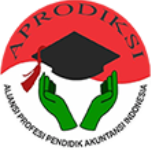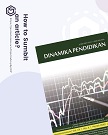The Effectiveness of Digital Literacy in Economic Learning
(1) Universitas Negeri Semarang
(2) Universitas Negeri Semarang
Abstract
The purpose of this research is to increase students’ economic learning interest and outcomes using digital literacy technology, such as Sparkol Video Scribe (SVc) and media chart (MC). This is an experimental research comprising of the control and treatment classes with international trade discussed as a sub-topic of the economic material. The learning activities method used the ADDIE model. While, the research subjects are high school students in Central Java. N-Gain model was used to determine the most effective level of analysis as well as the modification and path analysis. The main results showed that the application of SVc and MC learning models can attract students' interest in economic learning well. Although the SVc application was not effective in improving their overall performance, the MC literacy model was still effective. However, students' interest in learning about the second model has not been able to improve its performance significantly. The results further showed that the digital literacy method was not always able to improve student learning and performance effectively and efficiently.
Keywords
Full Text:
PDFReferences
Adebiyi, A. (2019). Understanding Effective Learning. Dept. of Curriculum Studies and Educational Technology, University of Minho, 1(1), 1-11.
Akdemir, S., & Kaya, Z. (2016). Learning and Teaching: Theories, Approaches and Models, ResearchGate, https://www.researchgate.net/publication/304119354.
Al-Kalai, Y.E. (2004). Digital Literacy: A Conceptual Framework for Survival Skills in the Digital Era. Journal of Educational Multimedia and Hypermedia, 13(1): 93-106.
Anthonysamy, L. (2020). Digital Literacy Deficiencies in Digital Learning Environment among University Students. Understanding Digital Industry, ResearchGate publication, Routledge, 133.
Bowles, M. (2015). Digital Literacy and E-skills: Participation in the Digital Economy, Innovation & Business Skills Australia, Ltd. [email protected].
Branch, R.M. (2009). Instructional Design: The ADDIE Approach. Springer Science-Business Media, LLC. www.springer.com
Chang, M.-M., & Hung, H.-T. (2019). Effects of Technology-Enhanced Language Learning on Second Language Acquisition: A Meta-Analysis. Educational Technology & Society, 22(4), 1–17.
Chetty, K., et al. (2018). Bridging the digital divide: measuring digital literacy. Open Assessment E-Journal Economics, 12(23): 1-18.
Chick, N., Kenny, N., Berenson, C., Johnson, C., Keegan, D., Real, E., & Reid L. (2018). Developing a Learning Culture: A Framework for the Growth of Teaching Expertise
Chick, N., & Hassel, H. (2009). “Don’t Hate Me Because I’m Virtualâ€: Feminist Pedagogy in the Online Classroom. Feminist Teacher, 19(3), 195-215.
Egan, J. P. (2020). Beyond the afterglow: Effective transfer of learning through instructional design. Teaching & Learning Inquiry, 8(1), 173-186. http://dx.doi.org/10.20343/teachlearninqu.8.1.12
Eshet, Y. (2012). Thinking in the Digital Era: A Revised Model for Digital Literacy. Journal Informing Science and Information Technology, 9(1); 267-276.
Facer, K. & Furlong, R. (2001), Beyond the Myth of the 'Cyberkid': Young People at the Margins of the Information Revolution. Journal of Youth Studies, 4 (4), 451–469. http://www.tandfonline.com/loi/cjys20
Garnett, R.F. (2009). Liberal Learning as Freedom: A Capabilities Approach to Undergraduate Education. Stud Philos Educ, 2009(28),437–447.
Hake, R.R. (2002). Relationship of Individual Student Normalized Learning Gains in Mechanics with Gender, High-School Physics, and Pretest Scores on Mathematics and Spatial Visualization. Journal physics education research conference, 8(1), 1-14.
Hake, R.R. (1999). Analyzing Change/Gain Scores. Dept. of Physics, Indiana University, 13(3), 1-4. http://www.physics.indiana.edu/
Igun, S. (2011). Bridging of Digital Divide in Africa. International Journal of Information and Communication Technology Education, 7(1): 11–20.
Indriyani & Putra, F.G. (2018). Media Pembelajaran Berbantuan Sparkol Materi Program Linier Metode Simpleks. Desimal: Jurnal Matematika, 1(3), 353-362
Lanshear, C., & Knobel M. (2016). Digital Literacy and Digital Literacies: Nordic Journal of Digital Literacy, 2006(2016), 8-20.
Lyons, A.C., Hanna, J.H., & Cobo, C. (2019). The Future of Work and Education for the igital Age: Bridging the Gap Between Digital Skills and Employability for Vulnerable Populations. G20 Governance of Digitalization in Japan.
McDougall, J., Readman, M., & Wilkinson, P. (2018). The uses of digital literacy. Journal Learning, Media and Technology, 43(3): 263–279.
Meltzer, D.E. (2002). The relationship between mathematics preparation and conceptual learning gains in physics: A possible ‘‘hidden variable’’ in diagnostic pretest scores. Am. J. Phys., 70(12), 1259-1268
Molnar, G. (2015). Teaching and Learning in modern digital Environment. IEEE 13th International SMAI, Har’lany, Slovakia, January 22-24 (2015), 213-317.
Ng, Wan (2012). Can we teach digital natives digital literacy. Computers & Education, 59 (3), 1065–1078. https://doi.org/10.1016/j.compedu.2012.04.016.
Nurdin, E., Maâ€aruf, A., Amir, Z., Risnawati, Noviarni, & Azmi, M.P. (2019). Pemanfaatan video pembelajaran berbasis Geogebra untuk meningkatkan kemampuan pemahaman konsep matematis siswa SMK. Jurnal Riset Pendidikan Matematika, 6(1), 87-98
Nurrohmah, F., Putra, F.G., & Farida. (2018). Development of Sparkol Video Scribe Assisted Learning Media, Formatif: Jurnal Ilmiah Pendidikan, 8(3): 233-250.
Prasetyo, P. E., & Dzaki, F. Z. (2020a). Efficiency Performance and Productivity of Creative Industries. International Journal of Scientific & Technology Research, 9(6), 122-132. http://www.ijstr.org/paper-references.php?ref=IJSTR-0620-36569
Prasetyo, P.E. & Dzaki, F.Z. (2020b) Institutional performance and new product development value chain for entrepreneurial competitive advantage. Uncertain Supply Chain Management, 8(4), 657-668. http://growingscience.com/uscm/online.html
Prasetyo, P.E., & Kistanti, N.R. (2020c). Human capital, institutional economics and entrepreneurship as a driver for quality & sustainable economic growth. Entrepreneurship and Sustainability Issues, 7(4), 2575-2589. https://jssidoi.org/jesi/issue/28.
Prasetyo, P.E. (2020d). The Role of Government Expenditure and Investment for MSME Growth: Empirical Study in Indonesia. Journal of Asian Finance, Economics and Business, 7(10) 471–480.
Pratiwi, U., Setyaningrum, R.A., & Kurniawan, E.S. (2020). Implementation of sparkol videoscribe physics-based learning media pace to improve students' analytical skills. Gravity, 6(1), 21-27.
SiRicord, T.S., Yunus M. (2018). Learners’ Perceptions on the Effectiveness of VideoScribe on Improving Listening & Speaking in Rural School of Sarawak. The Asian EFL Journal, 20(8): 56-68.
Spires, H.A., Paul, C.M., & Kerkhoff, S.N. (2018). Digital Literacy for the 21st Century. IGI Global Information Science Reference, 701(E), 2235- 2242. http://www.igi-global.com
Sturgeon, T.J. (2017). The ‘New’ Digital Economy and Development, United Nations, (UNCTAD); ICT4D/08, Devision on Technology and Logistics
Tang, C.M., & Chaw, L.Y. (2016). Digital Literacy: A Prerequisite for Effective Learning in a Blended Learning Environment. The Electronic Journal of eâ€Learning, 14(1), 54â€65. www.ejel.org
Urbancikova, N., Manakova, N., & Bielcheva, G. (2017). Socio-Economic and Regional Factors of Digital Literacy Related to Prosperity. Journal Quality Innovation Prosperty, 21(2), 124-141. https://www.qip-journal.eu/index.php/QIP/article/view/942
Vijayalakshmi, M. (2019). Modern Teaching Techniques in Education, Educational Technology in Teacher Education in the 21st Century, Conference, 2016/5/26, 448-451.
West, R.E. (2020). Foundations of Learning and Instructional Design Technology The Past, Present, and Future of Learning and Instructional Design Technology. Historical Roots, Outstanding Book, Version; 1.43, pp. 1-1103.
Yuosef, A.M.F., Chatti, M.A., & Schroeder, U. (2014). The State of Video-Based Learning: A Review and Future Perspectives, International Journal on Advances in Life Sciences, 6(3 & 4), 122-135
Refbacks
- There are currently no refbacks.

This work is licensed under a Creative Commons Attribution 4.0 International License.

.png)

.png)





